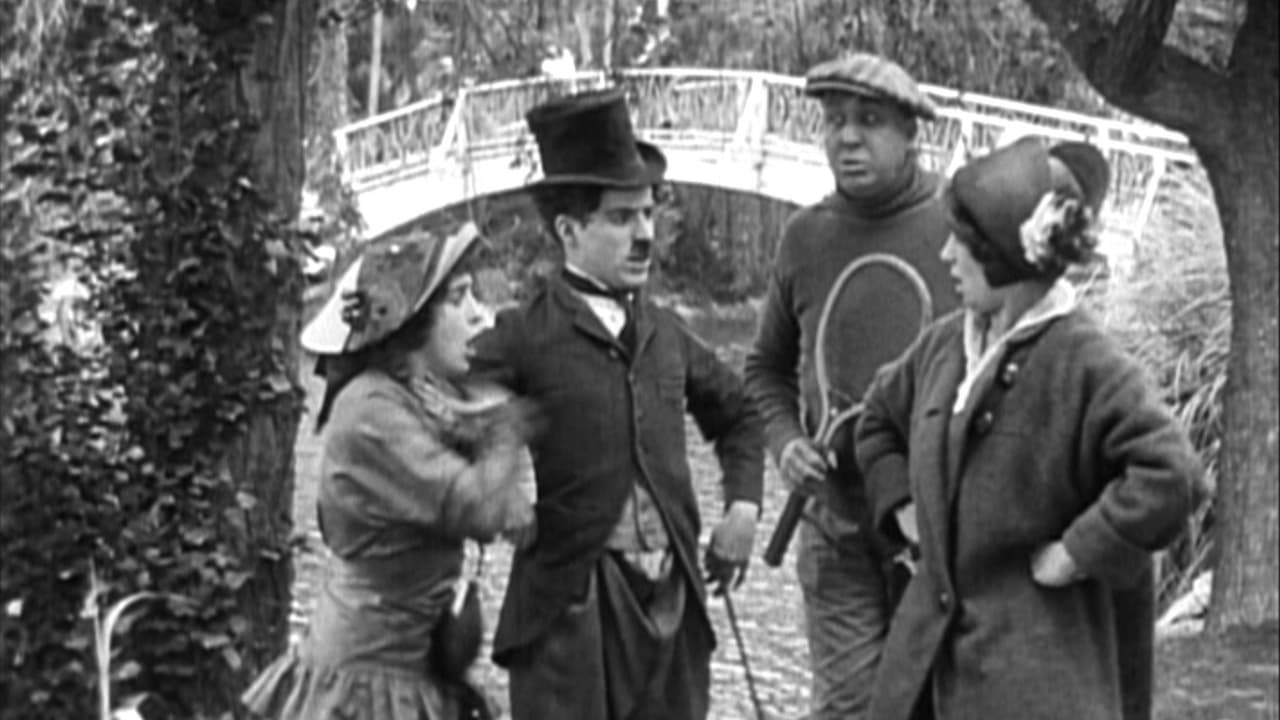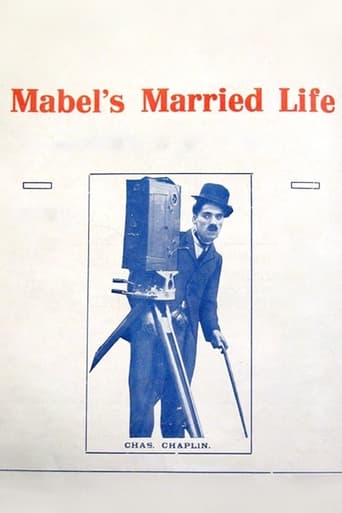

Am a big fan of Charlie Chaplin, have been for over a decade now. Many films and shorts of his are very good to masterpiece, and like many others consider him a comedy genius and one of film's most important and influential directors. He did do better than 'Mabel's Married Life', still made very early on in his career where he was still finding his feet and not fully formed what he became famous for. Can understand why the Keystone period suffered from not being as best remembered or highly remembered than his later efforts, but they are mainly decent and important in their own right. 'Mabel's Married Life' is a long way from a career high, but has a lot of nice things about it and is to me one of the better efforts in the 1914 Keystone batch and one of Chaplin and Mabel Normand's collaborations. 'Mabel's Married Life' is not as hilarious, charming or touching as his later work and some other shorts in the same period. The story is flimsy and the production values not as audacious. Occasionally, things feel a little scrappy and confused.For someone who was still relatively new to the film industry and had literally just moved on from their stage background, 'Mabel's Married Life' is not bad at all. While not audacious, the film hardly looks ugly, is more than competently directed and is appealingly played. Chaplin looks comfortable for so early on and shows his stage expertise while opening it up that it doesn't become stagy or repetitive shtick. Mabel Normand is charming and has good comic timing, working well with Chaplin.Although the humour, charm and emotion was done even better and became more refined later, 'Mabel's Married Life' is humorous, sweet and easy to like, though the emotion is not quite there. It moves quickly and doesn't feel too long or short. Overall, far from one of Chaplin's best but pretty good and perhaps one of his better efforts from the early Keystone period. 7/10 Bethany Cox
... View MoreHistorically noted as Chaplin's first film he directed, wrote, edited, and starred in, Chaplin plays a ineffectual husband faced with the imposing oaf: Mack Swain. Swain is trying to make time with Charlie's wife, played by Mabel Normand (who co-wrote the film). The setting is in a park and soon it's apparent Swain is married also and the yolk is on him as they say. Chaplin goes through his drunk routine in a bar while Mabel receives a special delivery of what looks like a mannequin version of Mack Swain in the park. Chaplin arrives home and, being drunk of course, thinks the mannequin is real. It's here where the highlight of the film comes. Nineteen year old Mabel Normand must have been a sensation in those pajamas back in 1914. The film appears to follow a more logical progression than most Keystone Chaplin efforts. It's one of the earliest films of Chaplin with extensive footage of him engaging in physical comedy with prop(s). ** of 4 stars.
... View MoreIn one of the most effective and thorough characterizations in any of Chaplin's films up until that time, in Mabel's Married Life Charlie plays Mabel's husband, an feeble drunk incapable of deflecting the oafish advances of a huge man in the park, who hits on Charlie's wife right in front of him. Starting these films in the park was one of Chaplin's favorite things to do back in the earliest days of his career, but here he starts his film there and then takes us into the mind of one of the characters, rather than just having some on screen slapstick goofiness.Soon after the park incident, Charlie goes to a bar and is teased by the other patrons as he slowly gets drunk. His wife, meanwhile, is at home fashioning a blow-up doll to resemble the man in the park, thus providing a scenario from which her drunken husband can emerge her hero.There have been some criticisms that the scene involving the dummy wasn't fleshed out and made into the effective scene that it could have been, but I have to disagree. It is very stereotypical Chaplin comedy that comes out of the scene, but I can't think of any reason to expect anything different. What we do get is a brief but effective look at the desperation of a woman who is married to someone who wants to but is unable to protect her from undesirables, and her efforts to improve her husband's confidence. It doesn't seem to work too well, but I have a feeling that the film's original audiences were more than pleased.This film, by the way, is notable as being the first that Chaplin was allowed to write and direct on his own, and as compared to the rest of his films from this time, it is clear that he immediately began to prove his talent. Oh, and one more thing - you may notice that the film has French intertitles. I'm not sure why this is, but those of you lucky (and smart) enough to own a Mac, you can just type them into the translator on your Dashboard and have it translated into your language of choice...
... View MoreThis short feature is a nice chance to see Charlie Chaplin and Mabel Normand together, and it's a decent comedy as well. Charlie and Mabel play a married couple, with the wife receiving a lot of unwanted attention from an annoying brute played by Mack Swain. As you would expect, Mabel is charming, and Charlie is a rather ineffective but generally sympathetic husband. Some of the comedy is a bit routine, especially towards the beginning, but there is a very good sequence later on that gets good mileage out of some amusing props. Take a look if you like these old Keystone comedies.
... View More